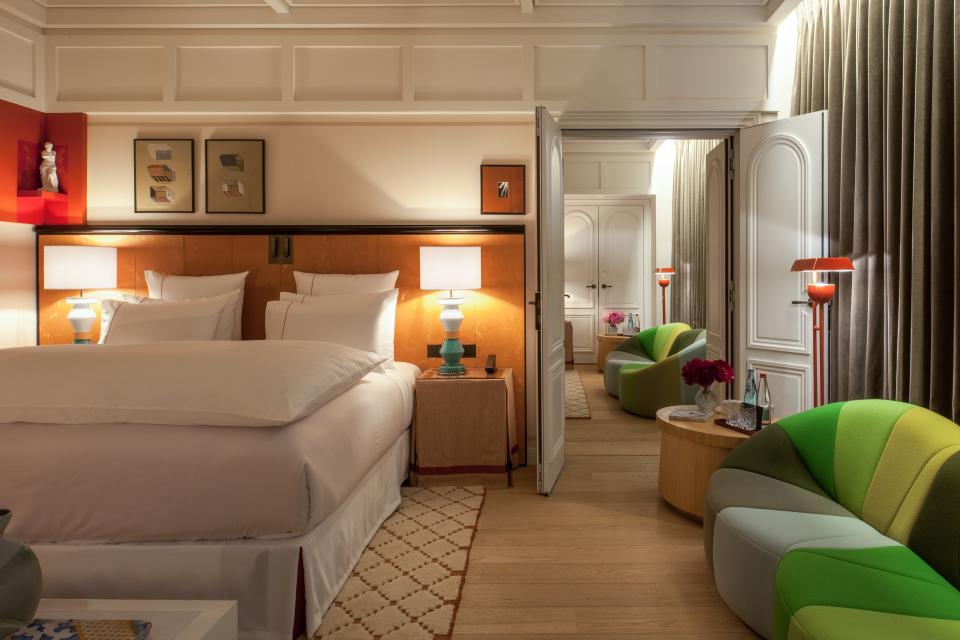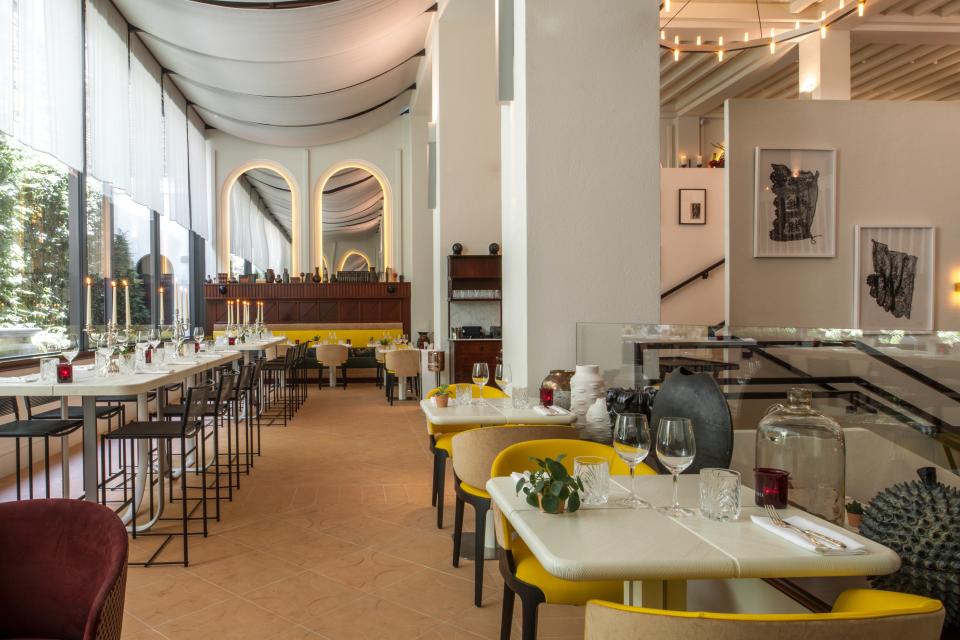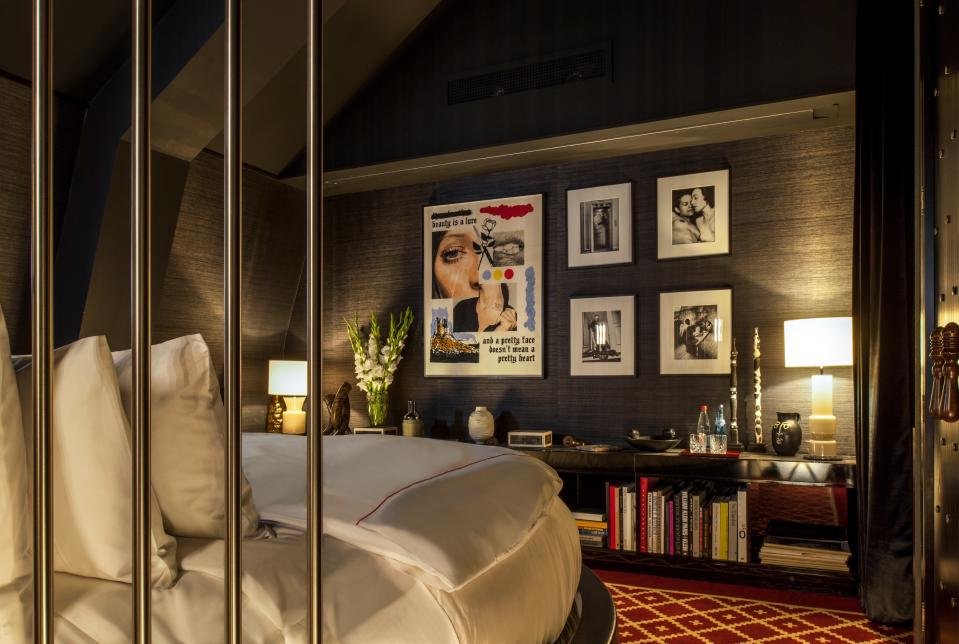This New Paris Hotel Puts an Old-School Twist on Cutting-Edge Design
The thought of a first-rate trip to Paris may conjure certain images—French aristocrats being served croquembouche, Ernest Hemingway and F. Scott Fitzgerald trading tales over drinks, that music video Beyoncé and Jay-Z recorded in the Louvre. There’s so much history from which to draw inspiration.
In the heart of Le Marais, one of the metropolis's most fashion-forward neighborhoods, Evok Hotels is attempting to raise the bar on Parisian luxury. The latest addition to the group's collection, Sinner Paris, is set to open this month. The 43-key property diverges from the classic looks of five-star stalwarts like the Ritz, the Bristol, or Le Meurice, and instead opts for something more dramatic.
Sinner Paris draws inspiration from an era most Francophiles overlook: the 14th century. In the early 1300s, the area was the home of the Catholic military order the Knights Templar. Today, the street on which it stands is still named the Rue du Temple.
Emmanuel Sauvage, Evok Hotels’ cofounder, worked closely with designer Tristan Auer on the concept of the hotel, which blends the beauty and grandeur of religious buildings with the sensuality of religious art. To maximize its archaic look, Auer imbued the spaces with vaulted ceilings, towering columns, tall stained-glass windows, and antique wooden doors. While religion may be what sparked the idea for the design, Auer and Sauvage have used it as more as a jumping-off point for the aesthetic—a little less Holy Crusades and a little more 2018 Met Gala.

“We were attracted to his eclectic style, first and foremost,” says Sauvage of tapping Tristan Auer to design the space. “He knows how to navigate through different eras and create a custom result. That was the challenge of this project: to take guests through the eras of the religious Marais to the vibrant and carefree Marais of the '70s, and to the present day, where leading names in design, literature, and art come together.”

In each of the rooms, Auer took great care not to retread ground from his previous hotel work (Hotel de Crillon, Hotel du Louvre, or Hotel Moscow). Almost all elements of the interiors have been custom designed, from the pattern of the fabric to the shape of the molding above the beds. The result is a juxtaposition of airy and colorful guest rooms with the mysterious and brooding corridors, where stained glass mosaics let colored light filter in.
“I’m nearly 50; I’m at a certain age where you begin to count, and make a résumé of your life. I really wanted to do something totally different than what’s around us,” says Auer. “There’s a real crisis in the interior design business. There are so many magazines, and websites, and Pinterest, that everybody’s copying everybody. I wanted to start from scratch and start something new.”

In addition to each room’s offerings, the hotel features a beautiful spa and hammam, as well as a restaurant and bar. The surrounding neighborhood is also home to popular boutiques like Anatomica and boheme restaurants like Derriére.
Sinner Paris is also the third location for Evok Hotels in the City of Light, each of which had an impressive designer at the helm. The first, Nolinski Paris, was designed by Jean-Louis Deniot. The second, Brach Paris, was designed by Philippe Starck. Auer’s work continues the brand’s mission to rethink the way luxury hotels can look and operate in the city.
“It draws from an erotic sensuality,” says Auer. “I want this space to be able to create a nice canvas for people to have their own feelings, and design their own stories.”
Originally Appeared on Architectural Digest

